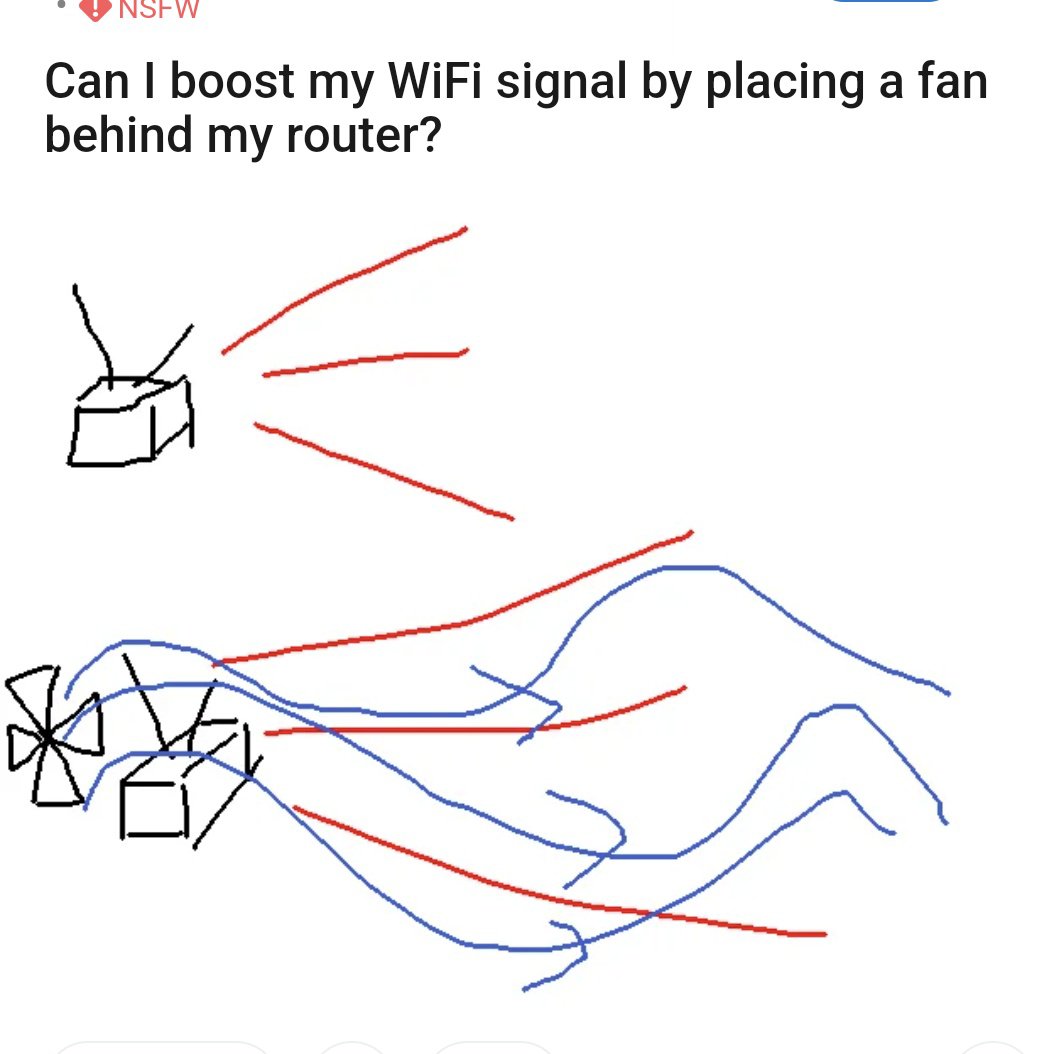this post was submitted on 12 Sep 2023
1253 points (97.7% liked)
Memes
45731 readers
1112 users here now
Rules:
- Be civil and nice.
- Try not to excessively repost, as a rule of thumb, wait at least 2 months to do it if you have to.
founded 5 years ago
MODERATORS
you are viewing a single comment's thread
view the rest of the comments
view the rest of the comments

But if waves transmit information, and the same information comes at all sides, won't the signals that bounce off the reflector arrive after the waves with a direct line and thus transmit redundant information?
Yes. They will.
When creating a reflector, you want to place it a specific distance from the focal point, so the waves are in sync with the waves going direct to the device, they will be offset one or two full wavelengths, but that hardly matters. About a half wavelength away from the emitter/antenna is ideal.
There's also a way to calculate the parabolic arc you want to make the signal very directional (the way a satellite dish works, but in reverse. Those dishes collect and concentrate the signal, in this case you want to redirect the emission in the same direction - think about it like a flashlight, where the majority of the light is in a small cone in the middle, but there's still some light going everywhere that isn't blocked by the mirror reflector dish in the flashlight).
There's a hundred different ways to get this done, tons of antenna designs to work with, but in general, wifi uses beamforming, which is a method to use multiple antennas that are transmitting the same signal, but they have the exact waveform slightly offset from eachother, which makes the signal much stronger in the complementary direction. It basically generates a beam the hard way. Wifi has gotten very good at doing this, so reflectors and directors, and all that fancy antenna design stuff isn't really required.
The only real improvement to be made, given wifi's current complexities, is to put in larger antennas; most wifi antennas are quarter wavelength or often smaller.... "Upgrading" to well matched full wavelength antennas may yield some benefit, but there's a lot of nuance there too. It's a deep subject so I'm just touching on how things go. I find it fascinating, I'm sure not everyone does.
Waves can bounce off of everything, wifi/Bluetooth/cellular automatically compensate for this effect. There is a lot of signal processing involved with wireless data transmission to filter noise and correct errors. This is part of the reason why it's taken decades to reach this level of wifi speeds and why Bluetooth has a real hard time matching wired audio.